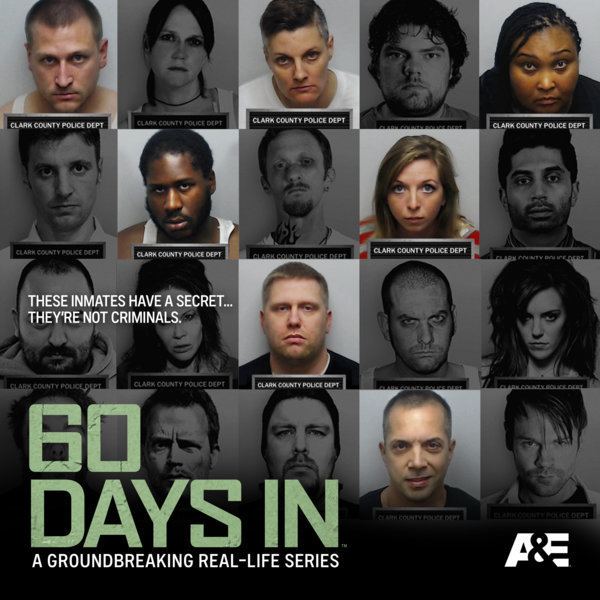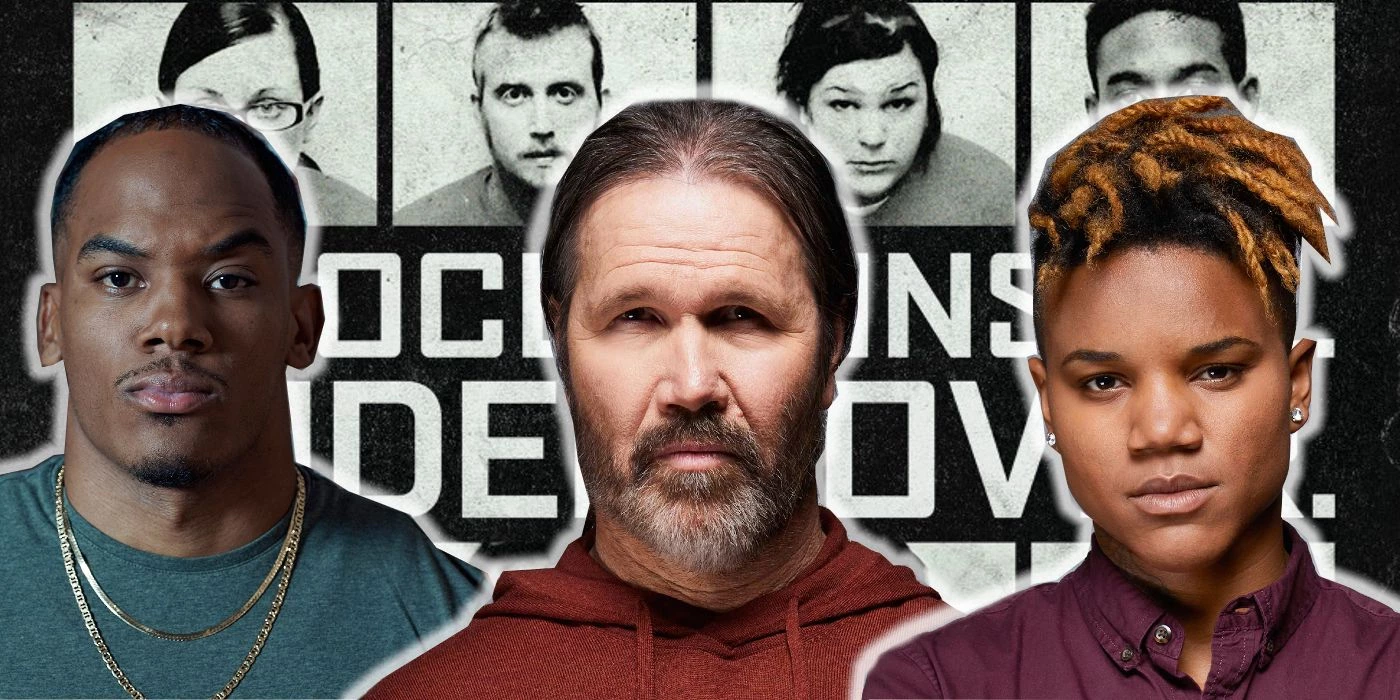Have you ever wondered what goes on inside a jail, far from public view? Well, there's a television series that pulls back the curtain, offering a very real look at life inside a correctional facility. It centers on a group of people who make an extraordinary choice, volunteering to spend time as if they were inmates themselves. This is all done to shine a light on problems within the system, like the presence of forbidden items or group activities that cause trouble.
The program, you know, gives us a chance to see what it's truly like when individuals, who are not really prisoners, step into that environment. Their main aim, it seems, is to find out about things that shouldn't be happening, activities that might be against the rules or even against the law. It's a way, in some respects, for outsiders to get a feel for the daily routines and challenges faced by those living inside those walls, even if it's just for a little while.
So, this whole idea gives viewers a chance to witness something that's usually kept hidden. It shows us, quite openly, what life is like when people choose to go undercover, spending time as if they are part of the general population. It's about seeing what happens when regular folks step into a situation that is, for most of us, completely unknown, and they do this to help identify issues that need attention, which is pretty interesting, actually.
- Greg Gutfeld Wife.https
- Fox News Sandra Smith Eyes.https
- Who Is Christie Sides Wife.https
- Masa49.https
- Wentworth Miller Wife.https
Table of Contents
- What is "60 Days In" all about?
- The Participants of 60 Days In
- Why do people go undercover in a jail?
- Locations Featured in 60 Days In
- How do they manage to stay hidden for "60 Days In"?
- The Unfiltered View from 60 Days In
- Can an ordinary person survive "60 Days In"?
- Where to Watch 60 Days In
What is "60 Days In" all about?
This television program, as a matter of fact, brings us into the world of correctional facilities by following several individuals who willingly place themselves inside a county jail. Their time there, which stretches to two months, is spent living just like any other person held there. The main idea behind this unusual undertaking is to bring to light certain problems, such as a large amount of illegal substances, items that are not supposed to be there, and organized group misbehavior. They do this, you know, to assist the local law enforcement official in charge of the jail in figuring out what needs fixing.
The series, it seems, puts seven individuals right into the middle of jail life, where they act as if they are serving time. For sixty days, these people live among the general population, trying to observe and gather information. Their purpose, basically, is to collect proof of activities that are questionable or against the law. This approach offers a very clear picture of what goes on behind the locked doors of places like Indiana's Clark County Jail, giving us a perspective that's not usually available to the public, which is really quite something.
It's about, you know, seven regular individuals making the choice to live alongside those who are actually incarcerated for two months. They do this without anyone else inside the facility, whether staff or other inmates, knowing their true reason for being there. This arrangement, so, provides an unfiltered view of daily existence inside these institutions. It's a way to see, honestly, what happens when people step out of their ordinary lives and into a setting that is typically very closed off from the outside world, and they do it for a specific purpose.
- Vegamovies 2025
- Ainsley Earhardt.https
- Liam Payne Jaw.https
- Berigalaxy Onlyfans.https
- Jessica Tarlov Husband.https
The Participants of 60 Days In
The people who take part in this show are not, you know, professional undercover agents or law enforcement personnel. They are, apparently, just regular folks, everyday individuals who volunteer for this very unusual experience. Their decision to step into a jail environment for sixty days, living among its general population, comes from a desire to help. They are, in a way, ordinary citizens putting themselves in an extraordinary situation to help bring about some sort of improvement. It's a rather brave thing to do, if you think about it, to willingly put yourself in such a setting for such a long stretch of time.
These seven people, as a matter of fact, decide to go behind the bars of a jail, giving up their freedom for a period to observe and report. They are sent in, without anyone on the inside knowing their real purpose, to get a truly honest look at how things operate. This means, basically, they live without the special protections or knowledge that officers or even other inmates might have about their true identity. It's about seeing, quite literally, what life is like when you are just another face in the crowd inside a correctional facility, which is a big part of the show's appeal.
You wouldn't, like, necessarily guess it just from watching the show, but the individuals you see on the program actually choose to be part of this whole experiment. They are not forced or ordered to do it; it's a completely voluntary act. In any given season, you know, there are a handful of these brave souls who agree to take on this unique challenge. They step into a very unfamiliar and potentially difficult environment, all to provide insights into a system that affects many lives, and that's pretty interesting, really.
Why do people go undercover in a jail?
The main reason these individuals choose to go undercover, it appears, is to help address serious problems that exist within correctional facilities. The show specifically mentions concerns about a large amount of illegal substances, items that are not permitted, and organized group activities that cause disturbances. So, their presence inside is meant to shed light on these issues, to gather firsthand information that can then be used to make things better. It's about getting a true picture of the situation, rather than relying on reports from those already inside the system, which can be a bit biased, sometimes.
Their goal, it seems, is to obtain proof of activities that are questionable or against the law. This information is then used by the sheriff or the jail administration to identify where the problems lie. For example, if there's a lot of contraband, they want to know how it's getting in and who is involved. If there's gang activity, they want to understand its scope and how it affects daily life inside. This is, basically, a way for law enforcement to get an outside perspective, a fresh pair of eyes on issues that might be hard to see from within the usual operations, and that's pretty valuable, actually.
The idea is that by having ordinary people, who are not known to anyone inside, live among the general population, they can observe things more naturally. They might see things that staff or regular inmates wouldn't point out, or that are hidden from official scrutiny. This helps the authorities understand the real conditions and the root causes of problems. It's about, you know, getting to the bottom of things, trying to improve safety and order for everyone inside the jail, which is a very important thing to do, really.
Locations Featured in 60 Days In
The series offers a very open look at life behind bars in specific places. One of the early seasons, for instance, focuses on the Utah County Jail. Here, the volunteers go in to help the sheriff figure out problems related to things like illegal substances, items that shouldn't be there, and group activities that cause trouble. It's about getting a clear picture of what's happening in that particular facility, which is pretty unique, you know, for a television program.
Later on, the show, as a matter of fact, takes us to Indiana's Clark County Jail. This location becomes a central point for much of the series, providing a chance to see the day-to-day existence within its walls. Seven regular people willingly step into this jail, living as part of its general population for two months. They do this, apparently, without anyone knowing their true identity or purpose. It gives us, basically, an unvarnished view of what it's like to be in that specific environment, which is quite rare to see.
The show, you know, really focuses on giving an unprecedented look at these places. It's not just about the idea of going undercover, but about showing the specific conditions and situations in these particular jails. By focusing on places like Utah County and Clark County, the series provides a tangible setting for the volunteers' experiences, making the observations and discoveries feel very real and immediate. It's a way, in some respects, to bring the reality of these institutions closer to the viewer, which is pretty compelling.
How do they manage to stay hidden for "60 Days In"?
A big part of the show's premise, it seems, relies on the fact that the volunteers' true identities and reasons for being inside are kept a secret. They are sent into the jail without the correctional officers or the other inmates knowing that they are not actual prisoners. This means they have to blend in completely, acting just like anyone else who is incarcerated. It's a rather delicate balance, you know, trying to gather information while also making sure no one suspects you are there for another reason, which must be very difficult.
The show, basically, highlights this challenge. The participants have to live among the general population for two months, all while keeping their true purpose under wraps. This involves, as a matter of fact, navigating social dynamics, avoiding situations that might expose them, and dealing with the daily realities of jail life without special treatment. They don't have the protection or the knowledge that staff members would have, so they are truly on their own, trying to maintain their cover, which is a lot to ask of someone.
It's about, you know, the sheer difficulty of maintaining a false identity in a very close-quarters environment. Every interaction, every moment, could potentially reveal their secret. The success of the experiment hinges on their ability to remain undetected for the full sixty days. This aspect of the show adds a layer of tension and suspense, as viewers wonder if and when their true nature might be discovered. It's a testament, really, to the volunteers' resolve that they manage to do this for so long, which is quite impressive.
The Unfiltered View from 60 Days In
The program makes a point of offering a very direct and open look at life behind bars. It's described as an "unprecedented" view, meaning it's something we haven't really seen before in this way. By sending ordinary people in as undercover prisoners, the show aims to provide an unfiltered perspective, showing things as they truly are, without any kind of gloss or censorship. This means, basically, viewers get to see the raw reality of daily life inside a jail, which can be quite eye-opening.
This unfiltered approach, you know, is what sets the series apart. It doesn't just tell us about problems; it shows us, through the eyes of the volunteers, what those problems look like on the ground. Whether it's the routine, the interactions between inmates, or the challenges faced by staff, the show aims to present it all without holding back. It's about giving the public a genuine glimpse into an institution that is often shrouded in mystery, which is pretty important, really, for public discourse.
The idea is that by having innocent volunteers live among the general population for two months, they can capture moments and observations that would otherwise remain hidden. They are there to experience it firsthand, to feel the atmosphere, and to witness events as they unfold. This creates a very authentic portrayal of life inside a correctional facility, offering insights that official reports or traditional documentaries might miss. It's about, as a matter of fact, bringing the truth to light, which is the show's core purpose.
Can an ordinary person survive "60 Days In"?
A very interesting question that comes up, you know, is whether an ordinary person can actually survive even a short time in a jail setting. The show, at one point, even poses the question of whether an undercover civilian could last for just twenty-four hours inside. This highlights the inherent difficulties and potential dangers of the environment. It's not just about physical safety, but also the mental and emotional toll of being in such a confined and often unpredictable place, which is a lot to think about.
The series, basically, explores the reality of this challenge through the experiences of its participants. They are not trained for this kind of situation; they are just regular people. So, their struggles and their ability to cope, or not cope, become a central part of the story. It shows, as a matter of fact, that even a short period inside can be incredibly tough, let alone the full two months they commit to. It really makes you wonder, you know, what it would be like to be in their shoes.
It's about, you know, the sheer grit and resilience required to endure such an experience. The show doesn't shy away from showing the difficulties, the moments of tension, and the emotional impact on the volunteers. This aspect really underscores the harshness of life behind bars and the bravery of those who choose to go undercover to expose its realities. It’s a powerful reminder, really, of the challenges faced by those who live in these environments, whether voluntarily or not.
Where to Watch 60 Days In
If you're interested in watching this series, you know, there are several ways to do so. You can find "60 Days In" and other popular television programs and films on various platforms. This includes, apparently, new releases, classic shows, and even content made specifically for certain streaming services. It's pretty convenient, actually, to have so many options available for viewing.
One common way to access the show, as a matter of fact, is through streaming services. For instance, it's mentioned that you can bundle certain services together, like with Disney+, for a monthly fee. This makes it easier to watch "60 Days In" along with a lot of other content. It's a very flexible way to consume media these days, giving viewers plenty of choices for how and when they watch their favorite programs.
You can also, you know, often find "60 Days In" available for free online, with multiple seasons ready to stream. The series has, apparently, run for six seasons, offering a considerable amount of content to explore. It's presented as a documentary series, focusing on a group of volunteers who step into a county jail as undercover prisoners to expose the actual conditions of the system. This means there's a lot to watch if you're curious about this unique look at correctional facilities.
The series "60 Days In" provides a very direct and open look at what goes on inside correctional facilities. It follows seven ordinary people who volunteer to spend two months living as if they are inmates, all to help identify and expose issues like illegal substances, prohibited items, and gang activity. The show takes us to places like Utah County Jail and Indiana's Clark County Jail, offering a perspective that's not usually seen. It highlights the challenges these volunteers face in staying hidden and the raw reality of life behind bars, giving viewers a genuine, unvarnished look at the system.


